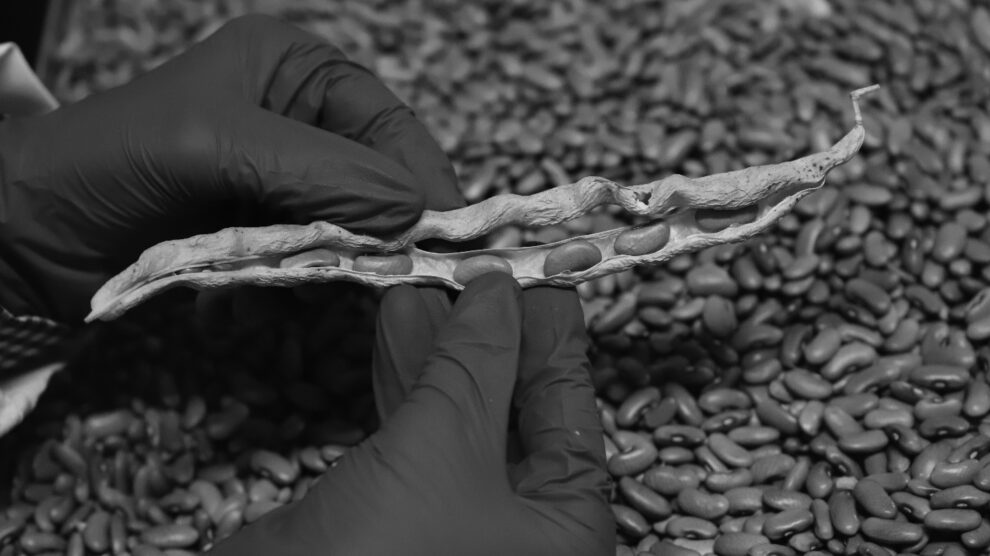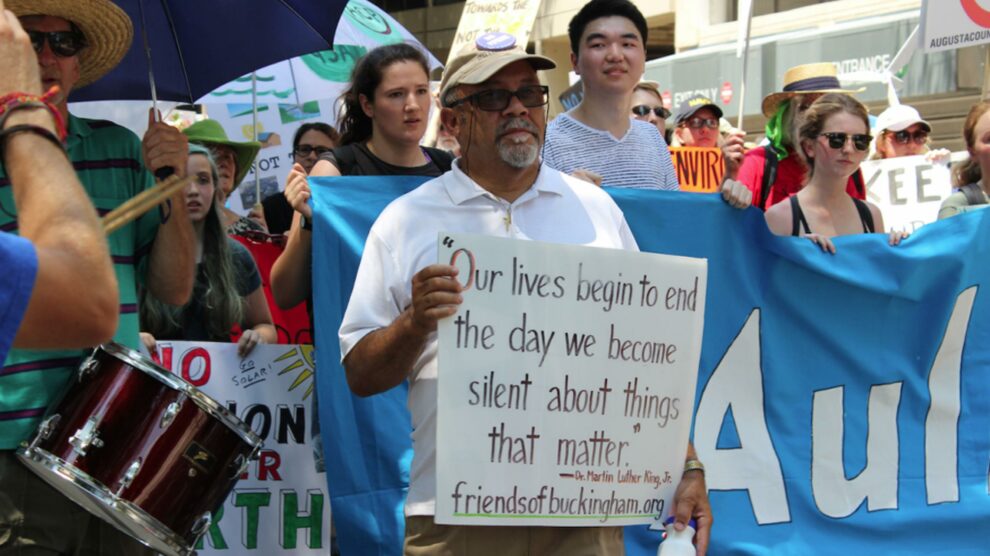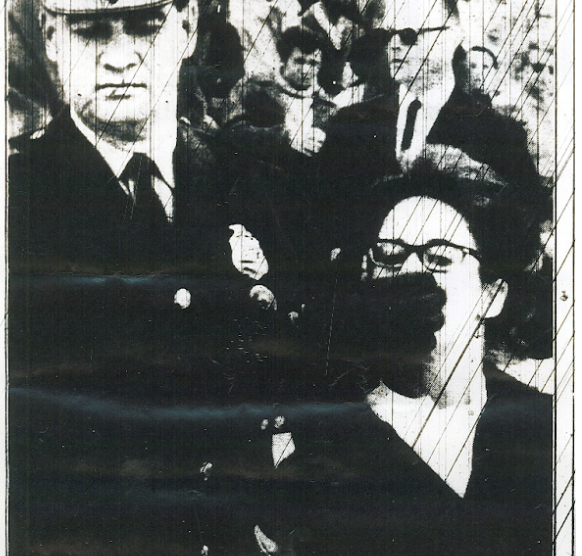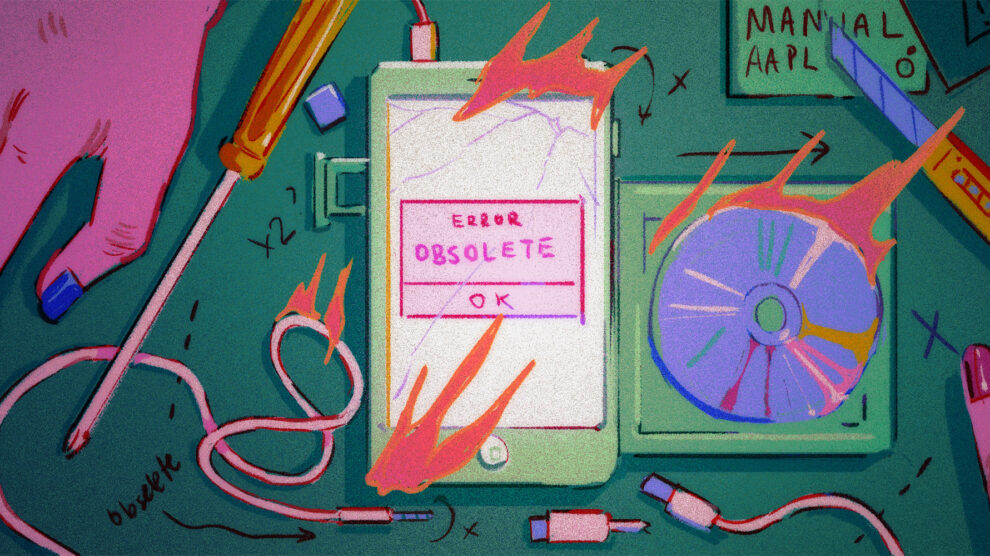Healing the Wounds of War in Vietnam
By Trude Bennett
Volume 25, no. 3, Killing in the Name Of
“All wars are fought twice, the first time on the battlefield, the second time in memory.” Thus begins Việt Thanh Nguyễn’s book of essays, Nothing Ever Dies: Vietnam and the Memory of War.1 In fact, war is much more than a memory for Việt people who continue to navigate a landscape of unexploded ordnance (UXO) and chemical contamination. All wars are fought endlessly in the bodies, minds, and lands of those who are invaded as well as those who fight.
From 1964 to 1973, the United States released 6,162,000 tons of bombs and other ordnance in Indochina, far greater than the combined amount during the Second World War and the Korean War. Việt people, in particular, were up against an unprecedented arsenal. Even after combat ended in 1975, an estimated 800,000 tons of UXO were left behind in Vietnam, including massive amounts of bombs, mines, and shells that frequently failed to detonate as planned (namely, “duds”), but remained active and unpredictable.2 UXO has subsequently killed 40,000 and maimed 60,000 Việt people, while causing severe environmental damage that impedes agriculture and other forms of development.3
The extensive wartime use of cluster bombs remains an ongoing threat to civilians, as these baseball-sized weapons explode in the air and disperse small bomblets over a great distance. In fields and forests all over Southeast Asia, cluster bombs lurk as deadly hazards lying in wait for farmers’ plows or children attracted by their bright colors. The United States, having used these weapons most recently in Yemen in 2009, has still not signed the Convention on Cluster Munitions endorsed by 123 other countries.4 Not only did the United States fail to provide war reparations to Vietnam,5 but a trade embargo placed on Vietnam was in force until 1994.
Recent US contributions to Agent Orange clean-up efforts and disability services through the Department of State and the Department of Defense have stemmed from a combination of forces: civil society activities in Vietnam, persistent lobbying by solidarity activists in the United States, a few stalwart Congressional advocates, the wish to project a benevolent US image, and, critically, the current desire for a political and military alliance with Vietnam to serve US strategic interests in the region.
Throughout the war and since its conclusion, the involvement of international non-governmental organizations (NGOs) and global citizens has been key to building antiwar consciousness and activism, as well as sustaining support for humanitarian efforts. In 2001, the Việt government collaborated with international NGOs to initiate Project RENEW, which became a highly successful integrated model of explosives survey and clearance, mine risk education, victim assistance and rehabilitation, and income generation in Quảng Trị province—the most heavily bombed place on Earth. More than eighty percent of the land in Quảng Trị is still contaminated by mines and explosives; accidental detonations have killed more than seven thousand residents since the end of the war.6 Equally devastating, Quảng Trị was among the ten provinces most targeted by chemical weapons.7 The province was sprayed with 613,000 gallons of Agent Orange and other toxic herbicides, leaving another ongoing legacy of disease, severe disability, death, poverty, fear, and anxiety for prospective pregnancies.8 Thus, RENEW’s mission also includes support for Agent Orange victims and their families.
When he was interviewed for this article in September 2022, Ngô Xuân Hiền (NH) was visiting Washington, D.C. for a fundraising event organized by Friends of Project RENEW—a US-based NGO formed to support RENEW’s mission. The goal of this event was to finance the adaptation of RENEW’s model in nearby Quảng Ngãi, at the request of provincial leadership. Trịnh Thị Hồng Thắm (TT), Leader of Project RENEW’s All-Women’s Emergency Response Team, was in Vietnam at the time. While Hiền graciously served as translator, it was not possible to interview Thắm at the same depth for this article. The shorter excerpts from Thắm in no way diminish the importance of her leadership and her team’s impact on the communities served by Project RENEW.
—
SftP: Can you tell me your background coming into Project RENEW?
NH: I am forty-six years old and the father of three. I have been with Project RENEW for almost fifteen years. Before that, I taught English at a high school in Khe Sanh—the former combat base of US Marines—for two years. In 2000, I was transferred to work for a Swedish-funded project on public administration reform at the provincial Department of Home Affairs. The project phased out in 2006, and I continued working in the public sector. In May 2008, I saw a recruitment announcement from Project RENEW on local TV, and I immediately applied. On June 5, 2008, I was accepted into Project RENEW after I was interviewed by its co-founders, Hoàng Nam and Chuck Searcy.9
In my first six months at Project RENEW, I worked as an interpreter and operations officer for the Demining Research and Development Program in partnership with Golden West Humanitarian Foundation. In early 2009, Chuck and Nam agreed that I should be in charge of communications and development for Project RENEW. I have been working in this position until now.
TT: I am thirty-two years old, and I have been working with Project RENEW for seven years. After spending three years in a technical survey team, I joined the all-women’s clearance team as a deputy team leader until 2021. In December 2021, I was assigned to lead the all-women’s emergency response team, funded by Friends of Project RENEW.
I spent my childhood on land heavily impacted by unexploded bombs left from the war. I once witnessed the passing of a neighbor. He died when part of a cluster bomb exploded while he was hoeing his land. He left behind his elderly mother, wife, and two very young children. The tragedy was a grim reminder of the deadly legacy of the war and also a motivation for me to work for Project RENEW.
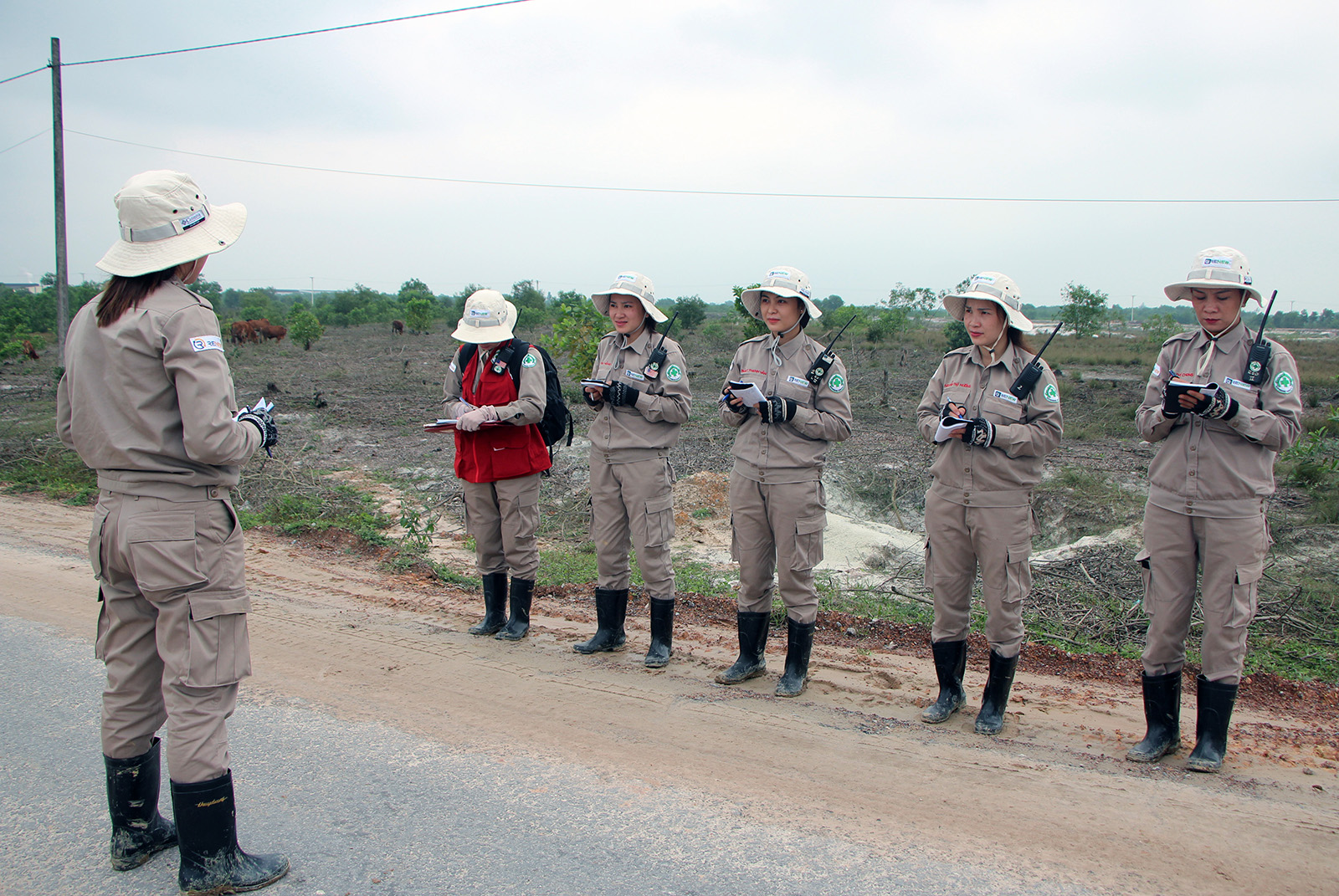
SftP: Why do you think it’s important to have an all-women’s team, and how have you been received in the community?
TT: As we work together in an all-women’s team responding to UXO sightings reported by local residents to the hotline number, we have affirmed that women are capable of doing the job safely and efficiently. Every time we approach local people who report their UXO sightings, everyone is amazed, but they like our work. They say the work we are doing is for men. Sometimes we hear them talking about our team—for example, “Why do women have to undertake this dangerous and heavy work?” or “Oh, they drive pickup trucks to where bombs are found like men do.” Or “What brave ladies!”
NH: Having an all-women’s team to take over the job which many say only men can do has changed public opinion. Recent years have seen a greater recognition of the role of women, not only in mine action but also in other aspects of life.
SftP: Do you think women have special advantages or unique challenges in this kind of work?
TT: Dealing with UXO is a dangerous and challenging job not only for men but also for women. The job needs healthy and resilient persons who can work under scorching heat or torrential rain. You have to walk a long distance carrying heavy tools. You have to be prepared for dealing with land leeches, snakes, and stinging caterpillars. Above all, you have to be disciplined to do the job safely.
SftP: What is the most satisfying aspect of your work with Project RENEW?
NH: In the early 1980s, as a primary school pupil, I witnessed a schoolmate four years older than me being carried home on a stretcher from a hilltop where he had tampered with a cluster bomb while collecting firewood. The explosion killed him on the spot.
Another tragic incident that shook our village occurred when three adults were trying to dismantle an artillery shell to extract explosives for fishing. Two died and one was seriously injured as a result of the blast.
I am proud to be part of Project RENEW. Through partnerships with other international NGOs, we have made impressive progress in clearing UXO, and contributed to reducing the number of deaths and injuries in Quảng Trị. From sixty accidents annually for two decades, this number has been reduced to almost zero from 2018 to 2022. Quảng Trị has become a humanitarian mine action model that can be adopted in other provinces in Vietnam still plagued by bombs and mines.
TT: For me, being accepted to work at Project RENEW was my good luck. I am so proud of this job. Prior to field deployment, I had undergone training that provided me with basic knowledge and skills needed to deal with UXO. Working alongside experienced, dedicated, and helpful colleagues has enabled me to enrich my knowledge and accomplish my tasks. I am satisfied and proud of my work.
SftP: What are the greatest challenges of your work?
NH: Support to families of severely disabled persons related to Agent Orange/dioxin remains a challenge. Quảng Trị, one of the most heavily sprayed areas with such defoliants, has a high prevalence of such families. We need funding to bring interventions right to the homes of these families—including home modification, health care, and income generation—so that life with disabilities can be made more bearable for these families.
Another challenge is that while survey and clearance of UXO are taking place, a substantial amount of resources needs to be allocated for risk education and victim assistance. Children born many years after the war must be educated on how to keep themselves from accidents and injuries, and those who were affected need to receive support to overcome their tragic accidents and rebuild their lives.
SftP: Are memories of the war still alive among younger generations in Quảng Trị? In what ways?
NH: It’s been almost fifty years since the fighting came to an end in Quảng Trị province. For younger generations who live in far-off and rural areas, memories of the war may only be occasional sightings of leftover explosives of war by their parents and even themselves. The three Rs: “Refrain from tampering, Retreat, and Report,” help protect them. Two recent incidents so far in 2022, four years after having zero accidents, are grim reminders that explosive leftovers are still capable of killing even five decades later.
SftP: How was your own family affected by the war?
NH: My mother’s father was a Việt Minh guerrilla platoon commander, and he made his ultimate sacrifice in 1950 when his daughter was three. My mother grew up and got involved in the anti-war movement led by Buddhist monks in the early 1960s. She was arrested and imprisoned for three years in Huế. When released, she joined the National Liberation Front (NLF) and fought from 1967 to 1969—the period that saw the bloodiest fighting between American GIs and the NVA (North Vietnamese Army) in Quảng Trị province.10 She was wounded three times.
Back in 2008, when I told my mom that I would resign from the public sector to join Project RENEW, she was totally supportive. I contemplated introducing her to Chuck Searcy and other American veterans who returned to help Vietnam. However, my mother died of a stroke in 2009 when she was sixty-two.
SftP: Are there any stories you would like to share about people who have been helped by Project RENEW?
NH: In the summer of 2000, fifth grader Hồ Văn Lai and two other boys in his village went to play on a sand dune near their home. They encountered several rusty cluster munitions, locally known as bombies, lying scattered on the ground. Too curious to stay away, Lai wanted to tamper with them. As he was hitting those bombs with a stone, an explosion occurred. The other two boys died on the spot. Lai lost two legs and one eye. His right hand was torn apart.
Now Lai is a full-time member of Project RENEW’s Risk Education program, providing life-saving UXO safety messages to children in Quảng Trị province. Working with the RENEW team helps Lai assert himself and help his community. Lai has left behind negative feelings that a disabled person would understandably have.
TT: The following story has impressed me, and it is also a motivation for me to try harder. A local resident was preparing concrete for the foundation of his new home when suddenly his workers encountered an artillery shell. They had to stop their work, and they made an emergency call to the Quảng Trị Mine Action Center (QTMAC). After receiving information from QTMAC, I called the informant asking for his address. He sounded frightened and urged our team to deal with the ordnance so that he could start the home’s foundation as planned. Our team arrived shortly afterward and safely dealt with the shell. I saw his smiling face when he thanked our team over and over. We felt happy, too. At that moment, I felt proud of the work we were doing because it helped remove a danger and bring back peace of mind to the community.
SftP: Do women in Quảng Trị have special needs due to war legacies and their family and work responsibilities? For example, are women fearful about the effects of Agent Orange on their pregnancies?
TT: Being born and growing up on a land impacted by bombs, mines, and toxic chemicals left from the war is worrisome for everyone. One of my nieces was born with severe disabilities related to Agent Orange. She is now eighteen years old but must be looked after like a child. That is difficult for her family and troubling for many.
We women, when working in an environment affected by war toxins, often feel anxious, particularly during our pregnancies. Notwithstanding, the organization improves conditions for us, and we receive assistance from our colleagues while we are pregnant. We have monthly prenatal medical checkups. One month prior to taking maternity leave, we switch to office work.
SftP: How do you see the impact of Project RENEW on the community?
NH: The comprehensive model that RENEW has introduced and developed over the past two decades assures the community that the lingering impact of the war is being solved. The community feels that they are part of today’s solution to the problem. Without support and cooperation from the community, we would have never advanced this far.
—
Project RENEW illustrates the long-lasting and devastating harms of war, and the importance of local leadership in devising the most appropriate and effective strategies for remediation. Chuck Searcy pointed out that “Project RENEW, unlike many other foreign organizations, was led by the Vietnamese from the beginning…with Vietnamese responsible for policy and management decisions in a working partnership with international organizations (for example, Norwegian People’s Aid) that could bring in technical expertise and years of experience from the outside.” Since UXO is not uniformly distributed throughout the province, Project RENEW’s goal shifted from surveying the entire land mass to focusing on the areas where people are most vulnerable, keeping people safe and confident to live normal lives.
The planned implementation of Project RENEW’s model in Quảng Ngãi province will serve, among others, survivors of the US massacre of up to five hundred unarmed civilians in the village of Mỹ Lai in 1968. This atrocity committed in Quảng Ngãi was not an isolated event.11 So-called rules of war cannot banish the horrors unleashed by imperialist aggression and overwhelming force.
Ultimately, NGOs can neither compensate for the lack of full and prompt reparations by aggressor nations, nor substitute for governmental policy and action that can only be achieved at a certain level of development—which are hindered by colonialism and war.12 The United States committed crimes against humanity in Vietnam, and in other countries before and since. Perhaps for this very reason, on a basis of imperial arrogance, the United States has to this date refused to be a member state of the International Criminal Court (which, in any case, can only prosecute individuals and has no power of enforcement).
Universal justice seems tragically remote at this moment, but there are experiments—some of them in the NGO sector—that may be instructive for grassroots organizing in the future. Among the many lessons we might learn are those embodied in Project RENEW: the ingenuity of survivors, the devastating and long-lasting effects of war trauma on civilians as well as combatants; the need for adequate, prompt, and globally enforced war reparations; the importance of direct participation by frontline communities in crafting solutions; and the healing of wounds of war via compassion, solidarity, and justice as we work to end the systems built upon militarism.
Notes
- Viet Thanh Nguyen, Nothing Ever Dies: Vietnam and the Memory of War (Cambridge, MA: Harvard University Press, 2016), 4. Unlike in the main text, we do not add diacritics to the footnoted references so that readers wishing to conduct further research will be more easily able to locate the cited works, which usually do not contain diacritics.
- Michael Clodfelter, Vietnam in Military Statistics: A History of the Indochina Wars, 1772-1991 (Jefferson, NC: McFarland Books, 1995).
- Jonathon Guthrie and Portia Stratton, “The Quang Tri Integrated Survey and Clearance Project,” The Journal of ERW and Mine Action 81, no. 1 (April 2015): 16–18; Minh Vu, “War Explosive Remnants Kill 40,000 People in Vietnam since 1975,” Hanoi Times, December 16, 2022, https://hanoitimes.vn/war-explosive-remnants-kill-40000-people-in-vietnam-since-1975-320434.html.
- Olivia Riggio, “Action Alert: NBC Off by 18 Years on US’s Last Use of Cluster Bombs,” FAIR, March 3, 2022, https://fair.org/home/action-alert-nbc-off-by-18-years-on-uss-last-use-of-cluster-bombs/.
- Article 21 of the January 23, 1973 Paris Peace Accords stated that “…the United States will contribute to healing the wounds of war and to postwar reconstruction of the Democratic Republic of Viet-Nam [sic] and throughout Indochina.” In 1977, the US State Department declassified a letter addressed to North Vietnam’s Prime Minister Phạm Văn Đồng and signed by President Richard Nixon four days after the Paris Peace Accords, detailing $3.25 billion worth of payments to be given to Vietnam over five years, in addition to “$1 billion to $1.5 billion in other forms to aid.” However, U.S. officials later declared that any commitments to reparations were not binding. See Marvin E. Gettleman et al., eds., Vietnam and America: The Most Comprehensive Documented History of the Vietnam War, 2nd ed. (New York: Grove Press, 1995), 479, 487.
- Guthrie and Stratton, “Quang Tri Integrated Survey.”
- Riggio, “Action Alert.”
- Riggio, “Action Alert”; Tine M. Gammeltoft, Haunting Images: A Cultural Account of Selective Reproduction in Vietnam (Berkeley: University of California Press, 2014).
- Chuck Searcy is a US Army veteran who served in military intelligence in Sài Gòn (now Hồ Chí Minh City) and later co-founded Project RENEW while employed by Vietnam Veterans Memorial Fund. He was also a founding member of Chapter 160 of Veterans for Peace in Vietnam. He accompanied Hiền to Washington, D.C. in September 2022.
- Coalition established in 1960 to conduct guerrilla warfare in South Vietnam in support of national elections and a unified country that “represented all social classes and religions.” NLF forces were derisively called “Việt Cong” by their opponents.
- Nick Turse, Shoot Everything That Moves: The Real American War in Vietnam (New York: Metropolitan Books, 2013).
- Gettleman, et al., Vietnam and America, 479, 487.


